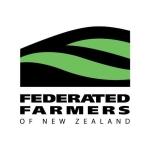Dairy farmers hail Te Waihora rehabilitation as a template
The $11.6 million rehabilitation of Te Waihora (Lake Ellesmere) provides a positive template for the cooperative involvement of Government, Iwi, industry, councils and farmers.
“The simple fact is farmers couldn’t do it alone, nor could Ngai Tahu, the council or Government. There’s a refreshing recognition that we all need to work together for the future,” says Willy Leferink, Federated Farmers Dairy chairperson.
“It was deeply humbling to be at Ngāti Moki Marae yesterday. There’s a strong sense of community because only through community will Te Waihora’s future be assured.
“Dairy farmers are part of the community and Te Waihora is as much a part of us as the rest of the community.
“We knew things had to change because Te Waihora has been in a bad way since 1993. It may well have flipped after the 1968 Waihine storms into what’s called a hypertrophic state.
“Lake Ellesmere is very much where dairy farming was; Te Waihora is about where dairy farming will be. Right now, dairy farmers are improving the farm environment with stock exclusion, planting waterways and recycling wastewater on-farm as fertiliser.
“To improve Te Waihora means undoing decades of damage from a less enlightened time and that caused by pests and from land use changes. The lake cannot recover until these are remedied.
“Pest animals, like introduced Canada Geese and ducks need to be controlled. Hunting experts, like Geoff Thomas, estimate there could well be 15,000 Canada Geese at Te Waihora. Canada Geese and other introduced water fowl are point sources of pollution.
“The financial and practical involvement of Fonterra Cooperative Group shows how serious we are as an industry. That is being taken further with dairy farmers working alongside Ngai Tahu and the community as we farm for the future of Te Waihora and our industry.
“When we look at other catchments with similar challenges, I think what we accomplished yesterday was the development of a template,” Mr Leferink concluded.
